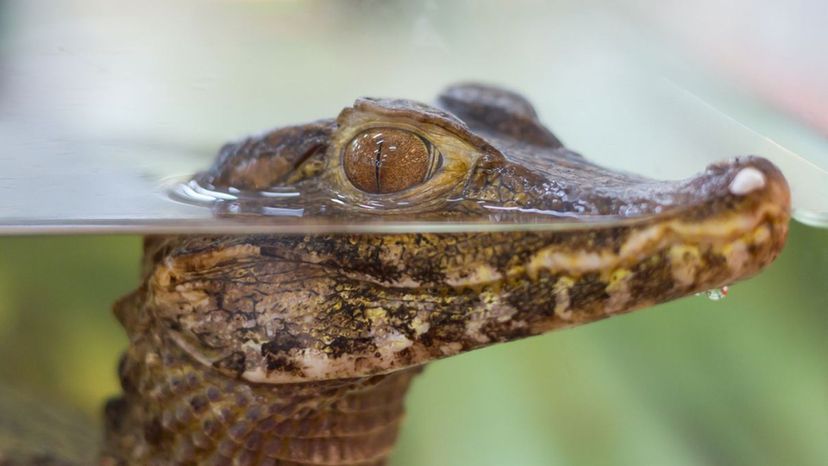
Image: n/a
About This Quiz
Reptiles are some of Earth's oldest and most interesting creatures. They are air-breathing vertebrates, with skin covered in scales or bony plates. Most people will recognize them as snakes, lizards, crocodiles, turtles and tortoises. Do you think you know your reptiles? Take this quiz and find out.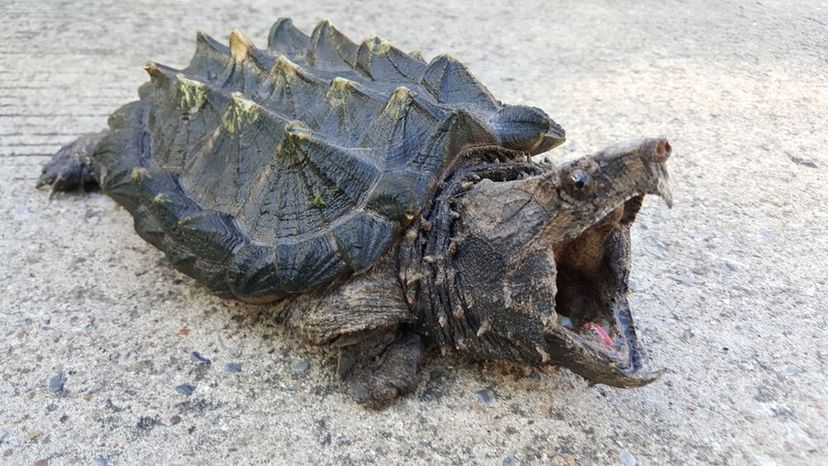
shutterstock
Which reptile is shown in this image?
Alligator Snapping Turtle
The Alligator Snapping Turtle is one of the largest freshwater turtles in the world. They are prey to no animal other than humans, but they are captured by humans to eat and trade as exotic pets. These turtles can live 20 to 70 years.
Gopher Tortoise
Box Turtle
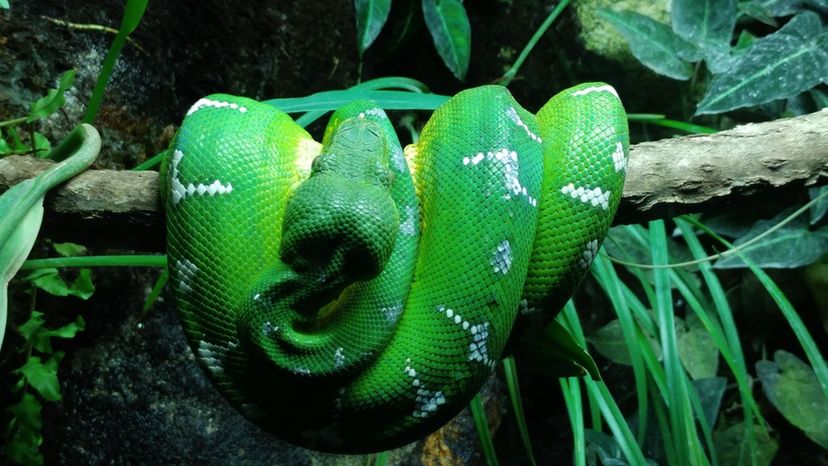
shutterstock
Which reptile is shown in this image?
Fea's Viper
Emerald Tree Boa
This beautiful green boa can be found in South America. Although its distinctive color gives it great attention among enthusiasts, it is actually red when it first hatches.
Osage Copperhead
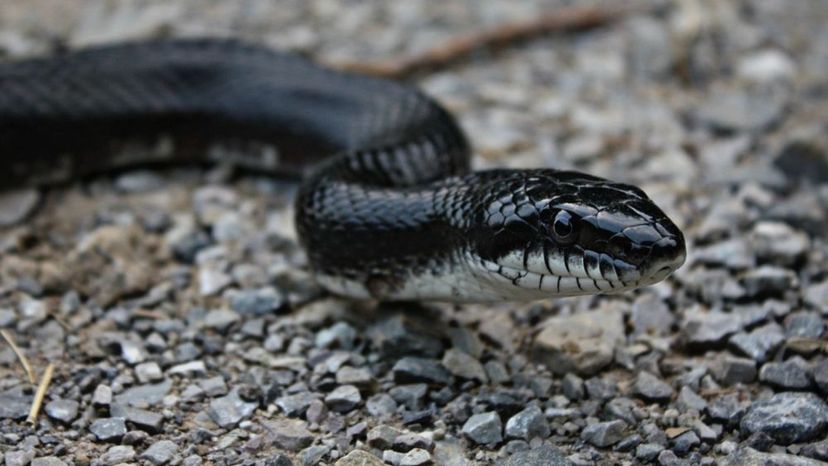
shutterstock
Which reptile is shown in this image?
Brazilian Rainbow Boa
Black Rat Snake
The black rat snake is able to easily move horizontally on the ground and vertically in trees. However, it is relatively harmless and will avoid confrontation.
Yangtze Mamushi
Advertisement

shutterstock
Which reptile is shown in this image?
Blue-tongued Skink
The blue tongue of this reptile is displayed when it feels threatened, in hopes of warding off enemies. It should be a welcome sight in gardens, as it will manage the snail and insect population.
Rhinoceros Iguana
Black-Speckled Palm-Pitviper
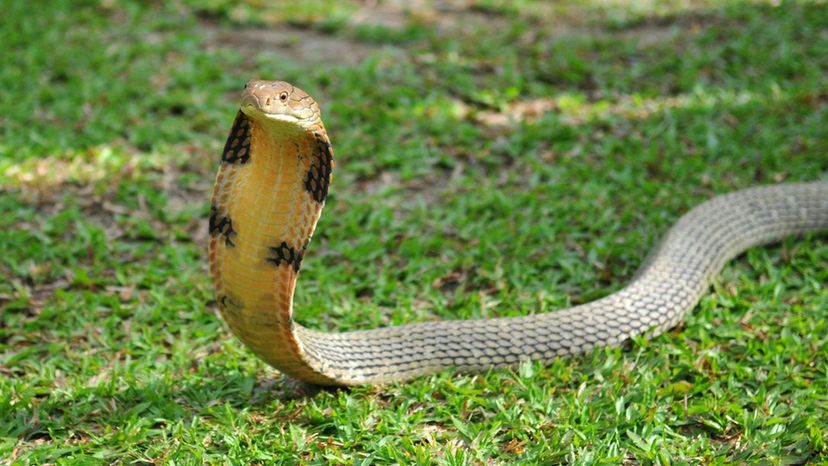
Shutterstock
Which reptile is shown in this image?
King Cobra
Even though their venom is not the most potent of venomous snakes, the quantity they release in one bite is enough to kill 20 humans. King cobras are known for their ability to "stand up" and flare their hoods in defense.
Masssauga Rattlesnake
Burmese Python

shutterstock
Which reptile is shown in this image?
Anatolian Viper
American Alligator
The American Alligator is a modern day dinosaur. This species is said to be over 150 million years old and survived the extinction of the dinosaurs 65 million years ago. The American Alligator also survived more recent endangerment and is now thriving in the fresh waters of Florida and Louisiana.
Leopard Gecko
Advertisement
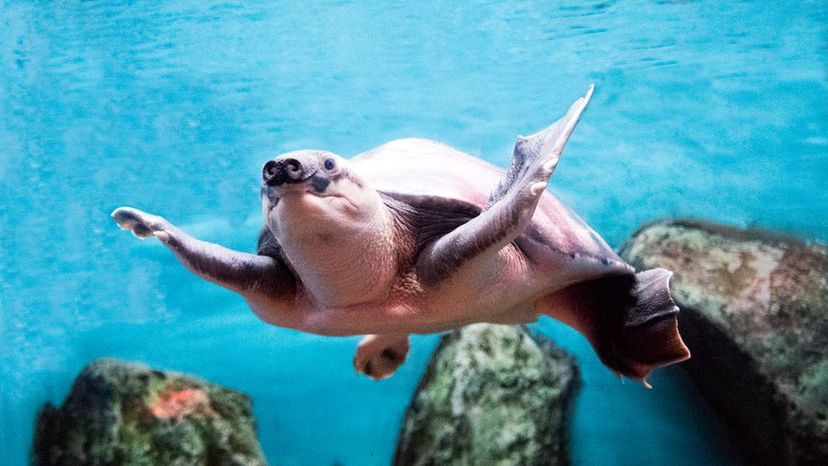
shutterstock
Which reptile is shown in this image?
Pig-Nosed Turtle
Though it is a freshwater creature, the pig-nosed turtle more closely resembles the sea turtle. Its snout acts a sort of snorkel to help it breathe in water.
Spotted Turtle
Box Turtle
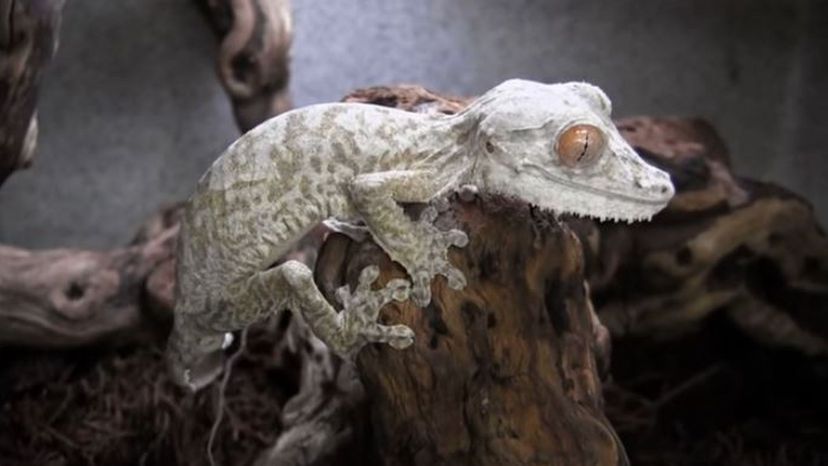
youtube
Which reptile is shown in this image?
Rhinoceros Iguana
Anatolian Viper
Henkel's Leaftailed Gecko
Like most geckos, it can release its tail if a predator grabs a hold of it. It will grow a new one, but it will be shorter than the first.
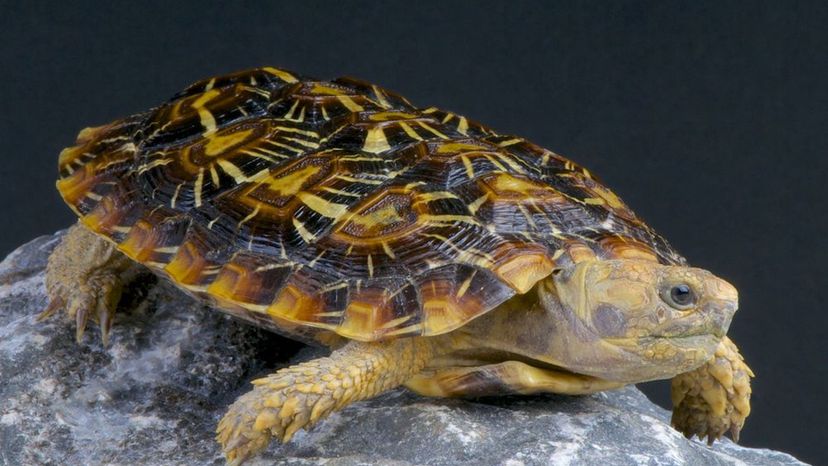
Shutterstock
Which reptile is shown in this image?
African Pancake Tortoise
When scared, pancake tortoises actually run into cracks in rocks. They hold tight with their front legs so prey cannot pull them out.
Yangtze Mamushi
Western Cottonmouth
Advertisement
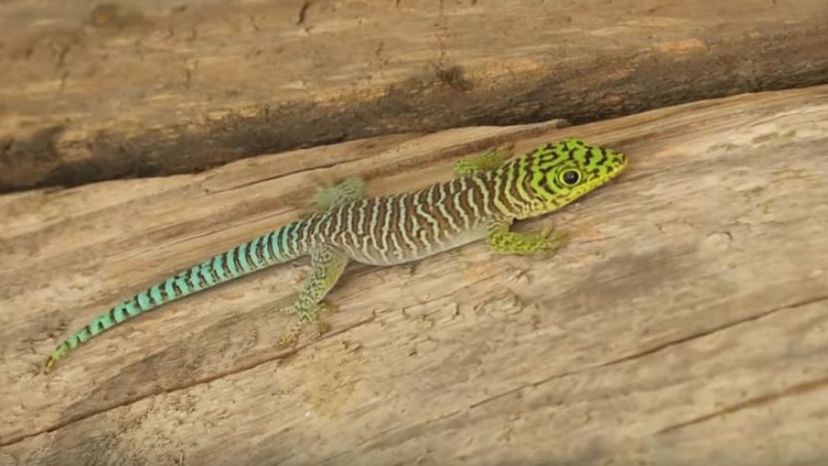
youtube
Which reptile is shown in this image?
Dwarf Caiman
Banded Day Gecko
The banded day gecko communicates with clicks, squeaks and croaks. Even though it is under the protection of the Convention on International Trade in Endangered Species, it is illegally harvested to sell as pets.
Armenian Viper
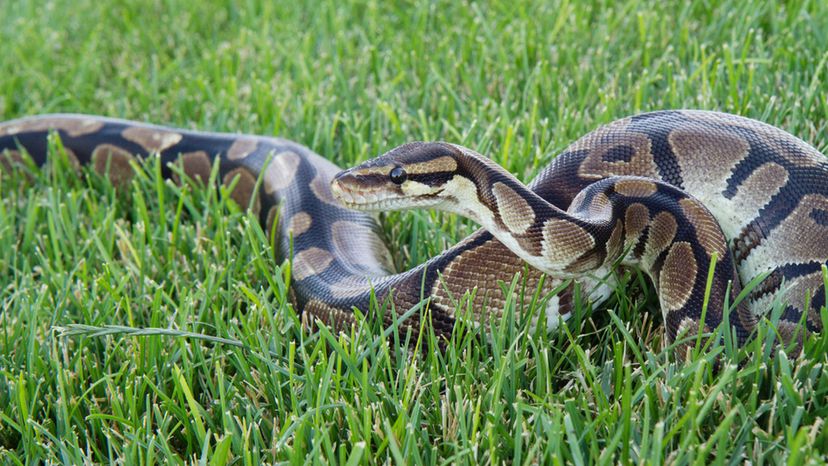
shutterstock
Which reptile is shown in this image?
Timber Rattlesnake
Ball Python
Ball pythons are common pets for snake owners. They get their name from the way they curl up like a ball in order to take their defensive position.
Prairie King Snake
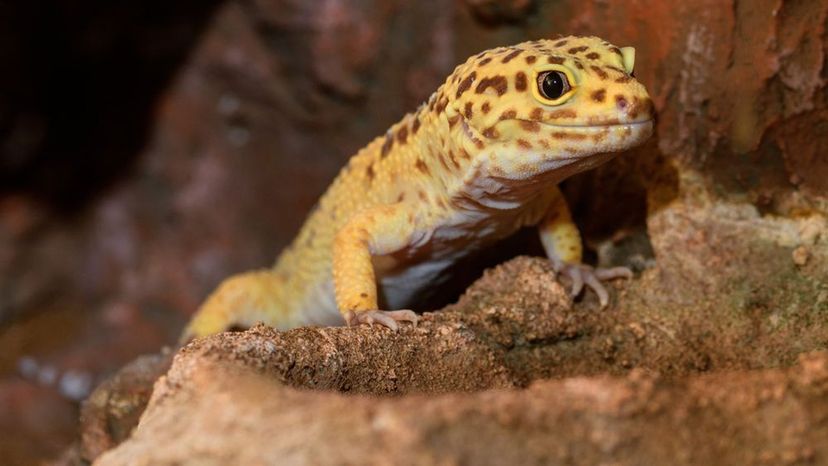
shutterstock
Which reptile is shown in this image?
Chinese Crocodile Lizard
Green Iguana
Leopard Gecko
Leopard geckos are a popular reptile pet. They can easily be found in pet stores. They have no odor, can be left alone for several days in a row, and don't make noise.
Advertisement
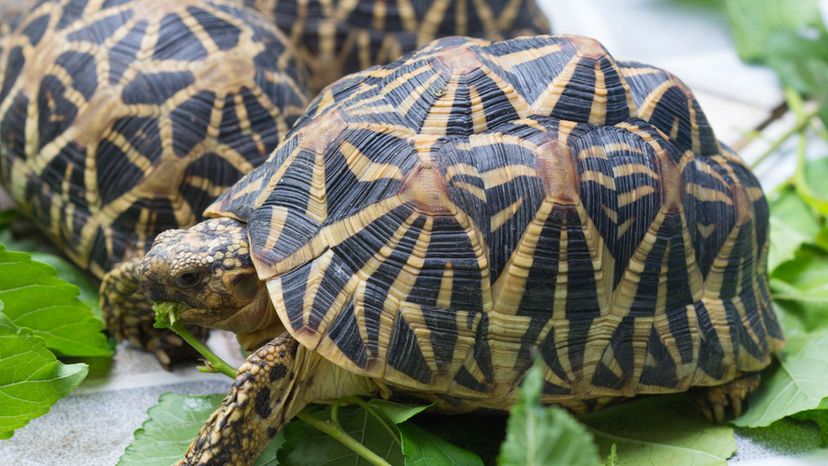
shutterstock
Which reptile is shown in this image?
Star Tortoise
Some star tortoises have raised shell pieces. It is unknown why this happens for some but not others. It is common to see both smooth shells and bumpy shells in this species.
Common Musk Turtle
Gopher Tortoise
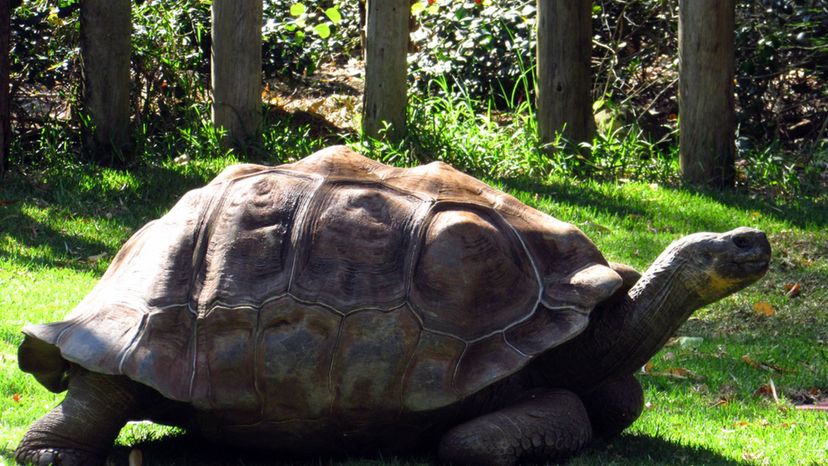
shutterstock
Which reptile is shown in this image?
Common Musk Turtle
South African Bowsprit Tortoise
Galapagos Tortoise
Galapagos tortoises are the largest in the world and the longest living. They can reach five feet long and 550 pounds. If needed, they can store large amounts of water and can go a year without eating.
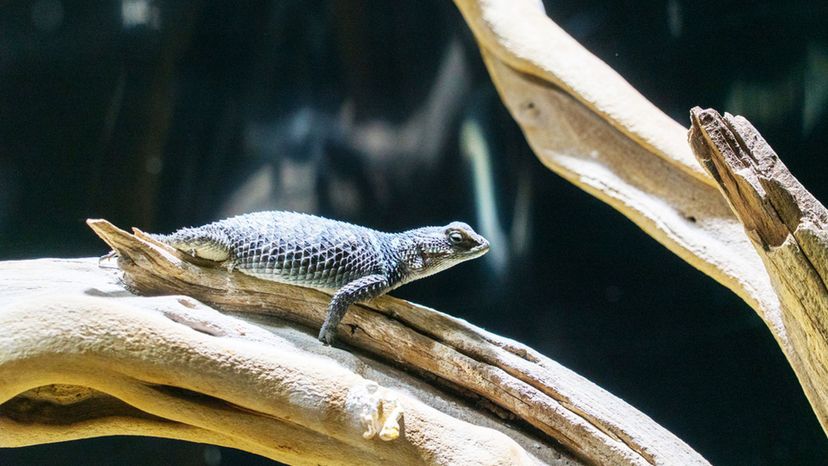
shutterstock
Which reptile is shown in this image?
Malayan Gharial
Blue Spiny Lizard
The Blue Spiny Lizard loves to climb and is most active during the day. It uses its sharp pointed scales to pierce its attacker and defend itself. However, it is not prey for very many other species.
Black-Headed Python
Advertisement
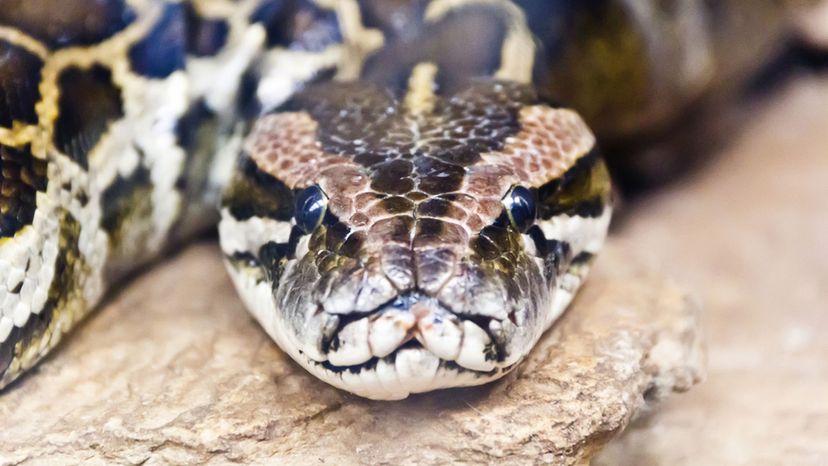
Shutterstock
Which reptile is shown in this image?
Burmese Python
The Burmese Python is one of the top five largest snakes in the world. It is a favorite among large reptile owners, however they often turn out to be more work than expected and are often released into the wild.
Grand Canyon Rattlesnake
Green Anaconda
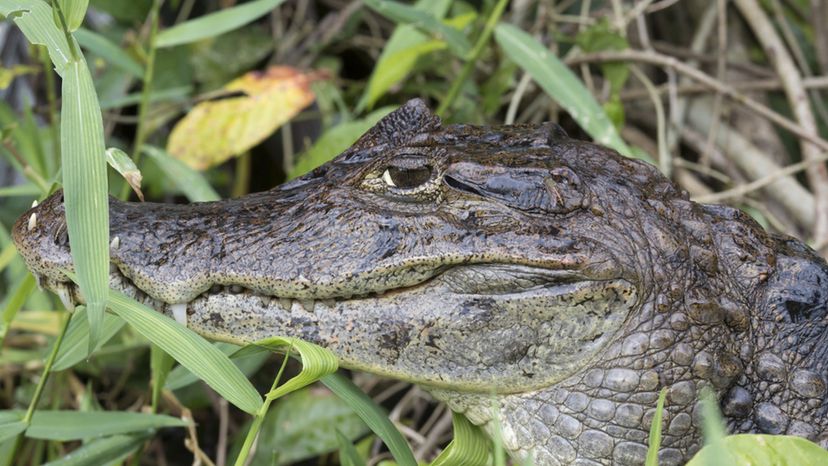
shutterstock
Which reptile is shown in this image?
Malayan Gharial
Warren's Girdled Lizard
Spectacled Caiman
The spectacled caiman is named for the bony ridge on its brow that makes it look like it is wearing spectacles. It is said to be the most variable since it has at least four subspecies, one of them being the Yacare caiman.
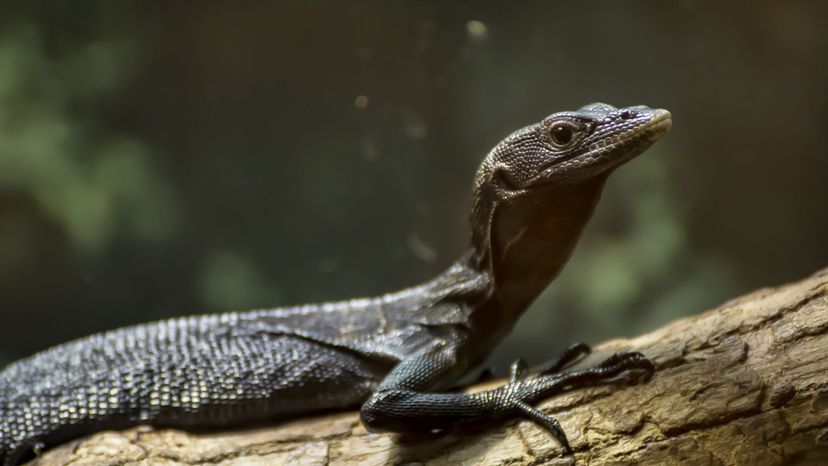
Shutterstock
Which reptile is shown in this image?
Black Tree Monitor
This monitor has longer teeth than other monitors. It resides in New Guinea, in the trees, where its long claws and gripping tail help it to get around.
Blue-Tongued Skink
Western Chuckwalla
Advertisement
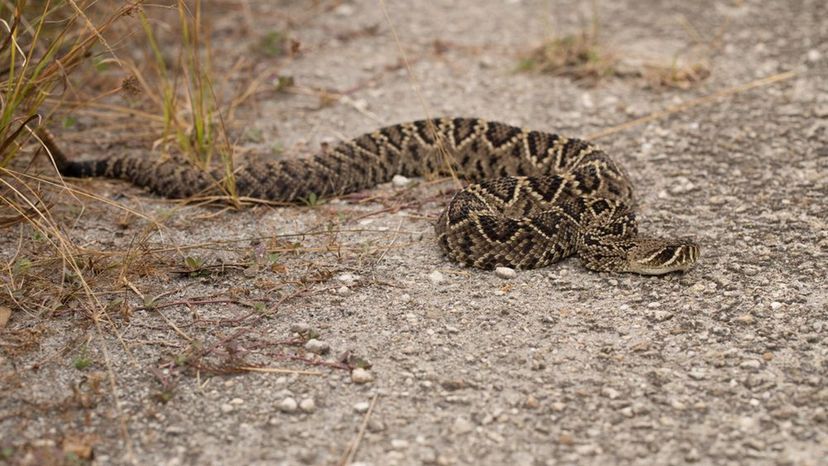
shutterstock
Which reptile is shown in this image?
Burmese Python
Jamaican Boa
Eastern Diamondback Rattlesnake
The eastern diamondback is one of the most venomous snakes and the largest rattlesnake in North America. It is not a girl's best friend, as a bite from this snake is painful and its venom kills red blood cells. However, death is rarely a result, as antivenin is widely available.
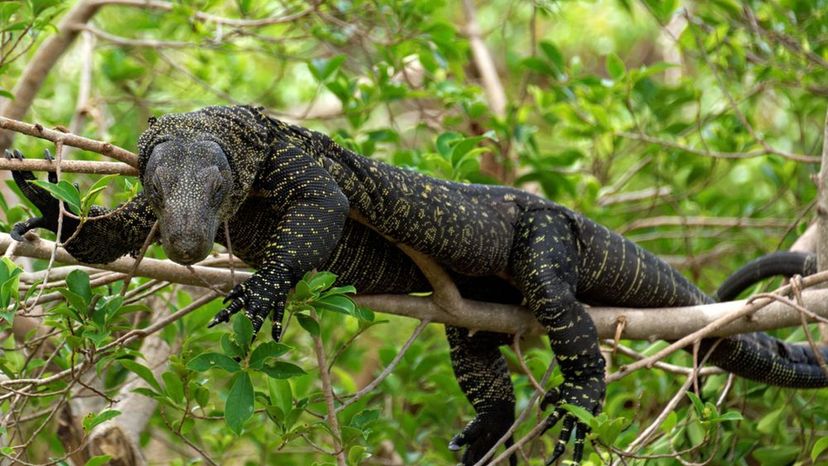
shutterstock
Which reptile is shown in this image?
Crocodile Monitor
This is the longest in the world in the lizard category. It can grow to over 12 feet, with two-thirds of the length coming from its tail.
Scheltopusik
Northern Death Adder

shutterstock
Which reptile is shown in this image?
Fiji Banded Iguana
You will not find this species in the Americas. Though it is brightly colored, especially the males, it can change color to hide in its surroundings. When an enemy approaches, it will turn black, hopefully a warning to stay away.
Angolan Dwarf Python
Bolkar Viper
Advertisement

n/a
Which reptile is shown in this image?
Reticulated Python
In March 2017, "USA Today" ran a story with a video of a 25-year-old farmer in Indonesia who did not return from his day's work. A searched turned up no farmer, but a boot, tools, and a really big snake. They cut open this reticulated python to find the intact body of the missing farmer.
Timber Rattlesnake
Northern Death Adder

shutterstock
Which reptile is shown in this image?
Scheltopusik
Savannah Monitor
Savannah Monitors are native to Africa. When they were imported to the U.S., they had a tough time surviving due to the change in environment. Sometimes these animals are kept as pets.
Mt. Mang Pitviper
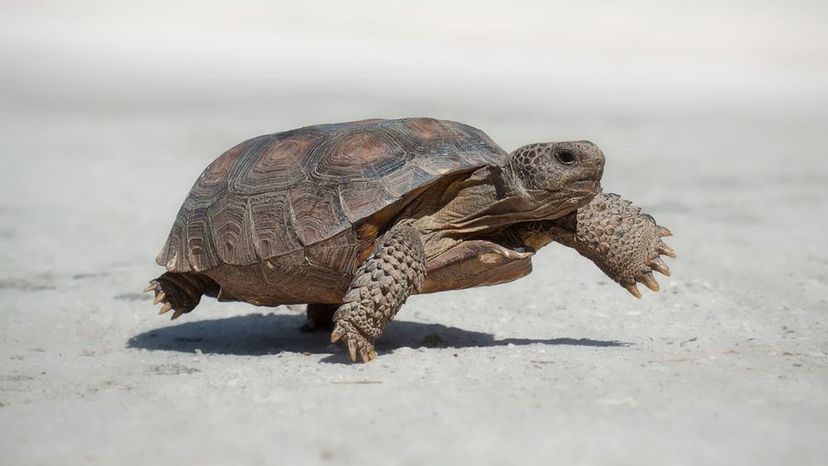
shutterstock
Which reptile is shown in this image?
Gopher Tortoise
Gopher tortoises provide shelter for themselves and other animals by burrowing into the ground. This is easy for them because their feet are shaped like shovels!
Alligator Snapping Turtle
Pig-nosed Turtle
Advertisement

shutterstock
Which reptile is shown in this image?
Warren's Girdled Lizard
Yacare Caiman
The common name for the Yacare is the Piranha Caiman. This is because of its large teeth, which are visible even when its mouth is closed. Oh, and it also eats piranha.
Arakan Forest Turtle

shutterstock
Which reptile is shown in this image?
New Caledonian Gecko
The New Caledonian gecko is the largest of the Gecko species. In the wild, males can be found on tree trunks and lower branches, while females prefer the canopy.
Western Chuckwalla
Savannah Monitor
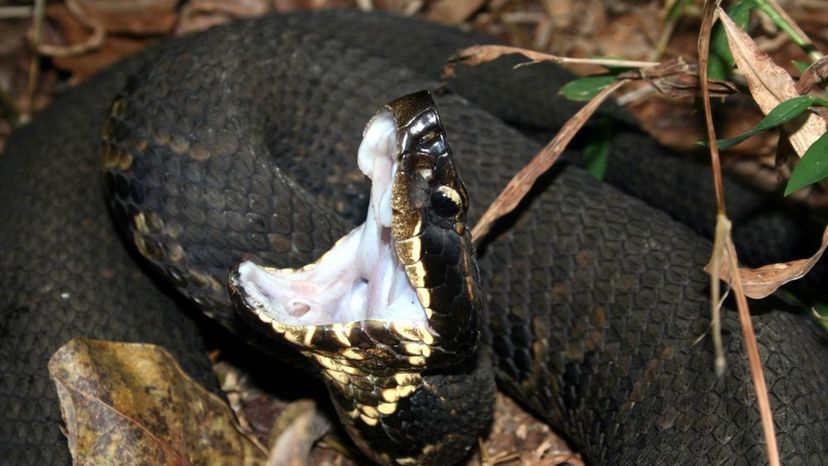
shutterstock
Which reptile is shown in this image?
Western Cottonmouth
This water moccasin can be found in Texas. It flattens its body when threatened and opens its mouth wide, displaying a cotton white inside.
Ridge-nosed Rattlesnake
West African Gaboon Viper
Advertisement

shutterstock
Which reptile is shown in this image?
King Cobra
Green Anaconda
Even though the reticulated python claims the "longest snake" title, the green anaconda has such a girth that it is the largest. These snakes mate in groups with one female in the middle and the males fighting for a turn. The female will mate multiple times and sometimes will eat her mate when finished.
Sawu Python
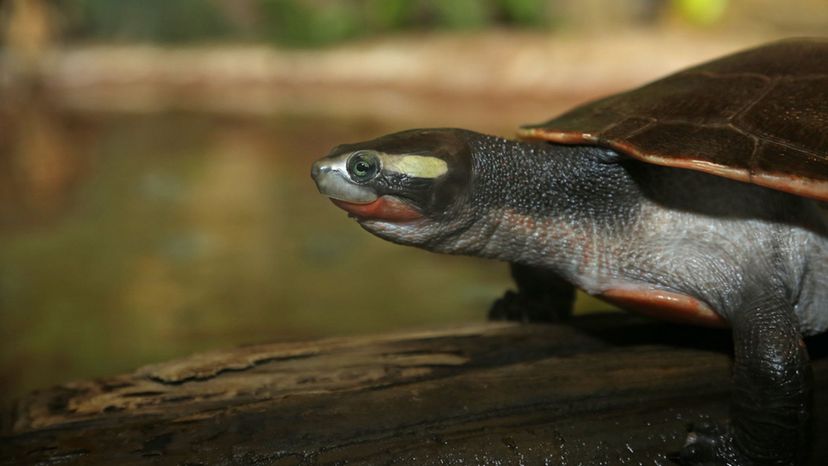
shutterstock
Which reptile is shown in this image?
African Pancake Tortoise
Red-bellied Short-Necked Turtle
This turtle pulls it head into its shell sideways, in contrast to turtles in North America who pull their heads straight in. This turtle can grow up to ten inches in shell length.
McCord's Box Turtle

shutterstock
Which reptile is shown in this image?
New Caledonia Gecko
Savannah Monitor
Cuban Crocodile
The Cuban crocodile is very picky about its habitat. It can only be found in the Zapata Swamp and in the Lanier Swamp of Cuba.
Advertisement
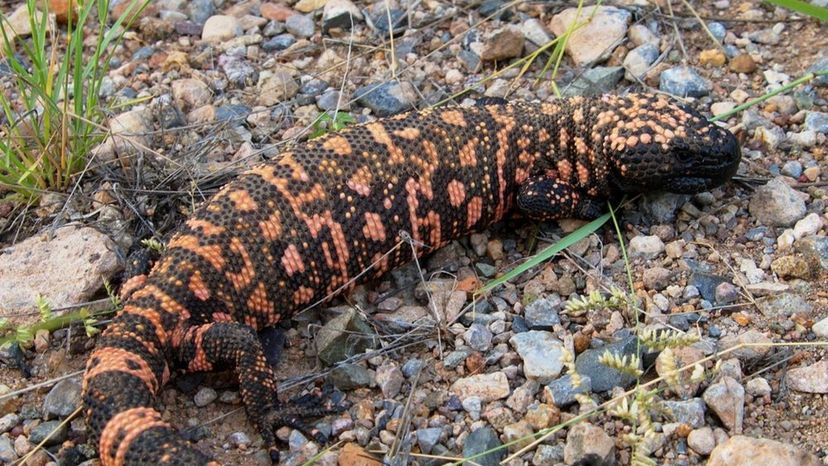
shutterstock
Which reptile is shown in this image?
Banded Gila Monster
The Banded Gila Monster is one of the very few venomous lizards of the world. It poisons its target by chewing on it and allowing the poison to flow through the grooves in its teeth and into the flesh wounds.
American Alligator
Mexican Beaded Lizard
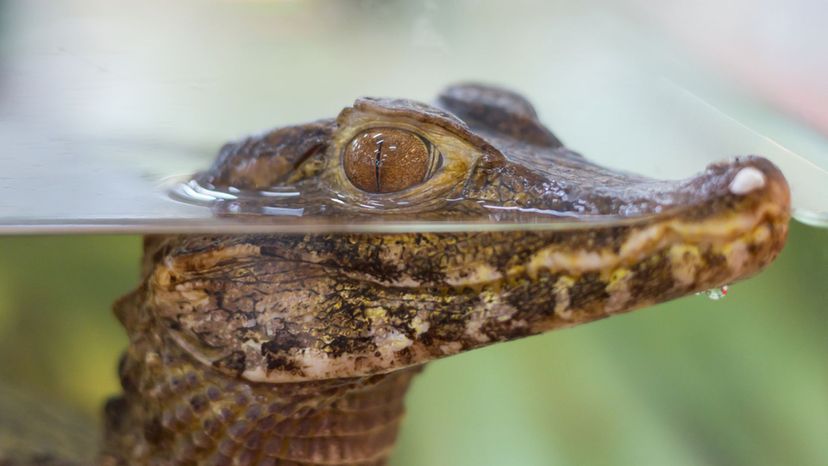
shutterstock
Which reptile is shown in this image?
New Guinea Crocodile Skink
Dwarf Caiman
The Dwarf Caiman is the smallest of crocodiles. A large male may grow to 1.6 meters, and a female to 1.2 meters.
Anatolian Viper
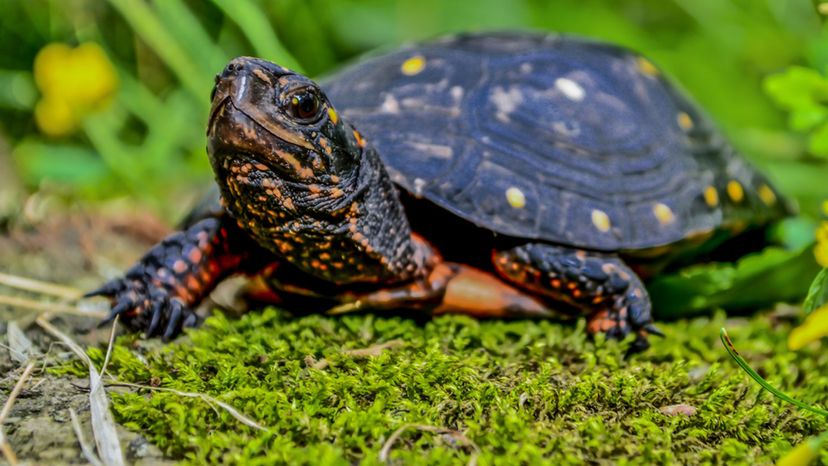
shutterstock
Which reptile is shown in this image?
Egyptian Tortoise
Red-Bellied Short-Necked Turtle
Spotted Turtle
This turtle gains spots as it grows. Hatchlings come out with only one spot on each plate, whereas adults can be seen riddled with many. There have been some found with no spots within this same species.
Advertisement
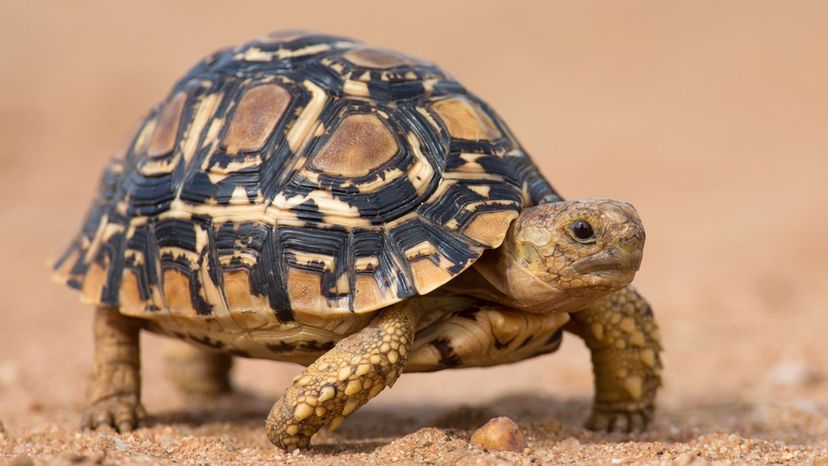
shutterstock
Which reptile is shown in this image?
Leopard Tortoise
The Leopard Tortoise's shell pattern provide camouflage on the savannah. They are very sensitive to humidity.
Star Tortoise
Galapagos Tortoise

shutterstock
Which reptile is shown in this image?
Central Asian Cobra
Brazilian Rainbow Boa
These boas can live to be 20 years old. They are non-venemous -- they constrict their prey.
Moorish Viper
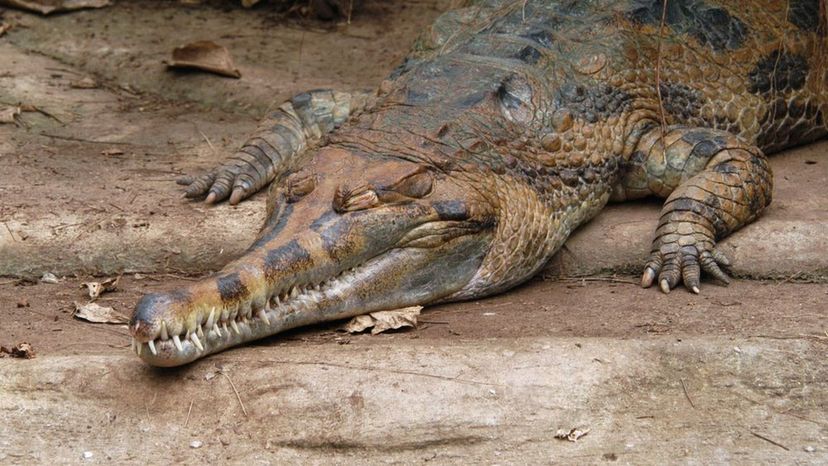
shutterstock
Which reptile is shown in this image?
Malayan Gharial
The Malayan gharial is also known as the false gharial. Fewer than 2,500 of these animals remain in the wild, because their habitat is being destroyed.
New Caledonian Giant Gecko
Ornate Box Turtle
Advertisement
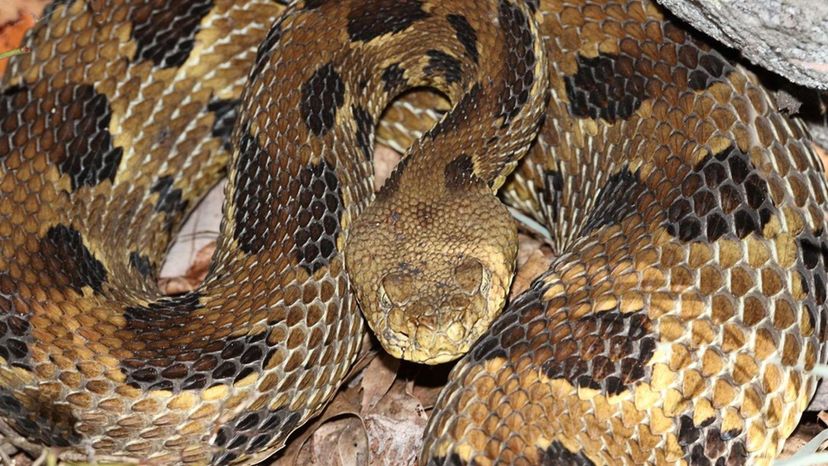
Shutterstock
Which reptile is shown in this image?
Timber Rattlesnake
The timber rattlesnake is also known as the canebrake rattlesnake or the banded rattlesnake. It is the third largest venomous snake in the U.S.
Yangtze Mamushi
Moorish Viper
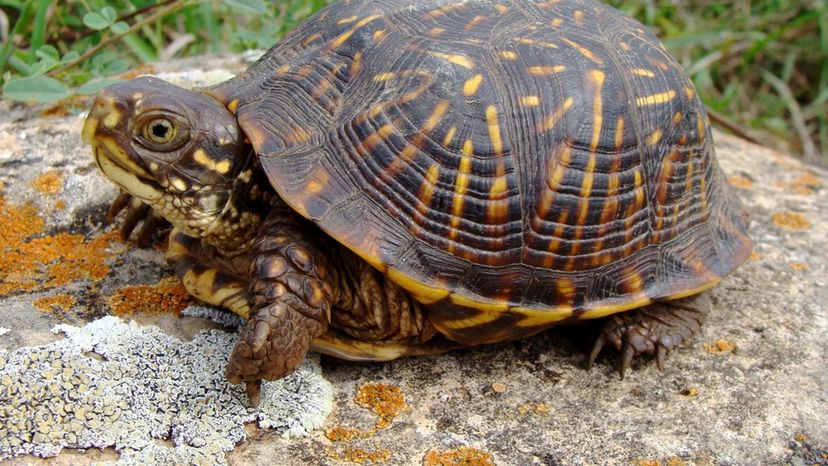
shutterstock
Which reptile is shown in this image?
Star Tortoise
Box Turtle
The box turtle is the larger category to multiple subspecies such as the ornate box turtle and the spotted box turtle. This is the stereotypical turtle that you would see in media or pictures with its domed shell.
Common Musk Turtle
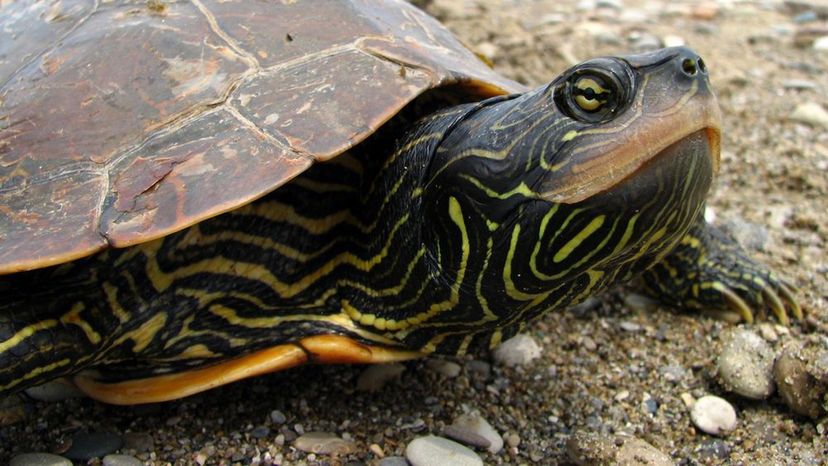
shutterstock
Which reptile is shown in this image?
Galapagos Tortoise
Common Map Turtle
The common map turtle is so named by the map-like lines on its shell. It lives in the water and has webbed feet.
Narrow-Headed Softshell Turtle
Advertisement
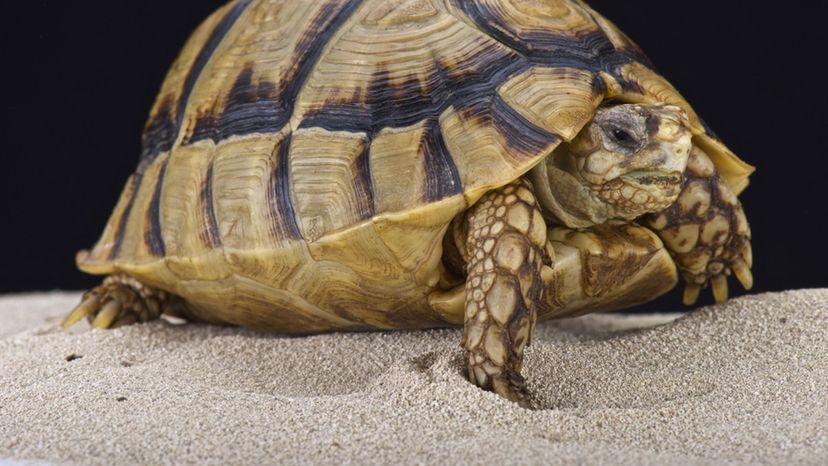
shutterstock
Which reptile is shown in this image?
Common Map Turtle
Egyptian Tortoise
This tortoise is classified as critically endangered. Human development of land has put its habitat in danger.
Leopard Tortoise
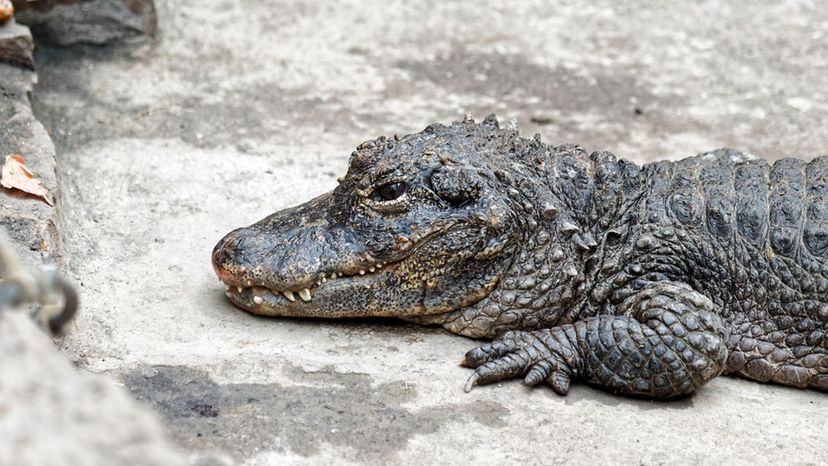
shutterstock
Which reptile is shown in this image?
New Guinea Crocodile Skink
Malayan Gharial
Chinese Alligator
The Chinese Alligator's snout is slightly more upturned and tapered than that of its counterpart, the American Alligator. It is also one of the most endangered and smallest of the crocodilian family.
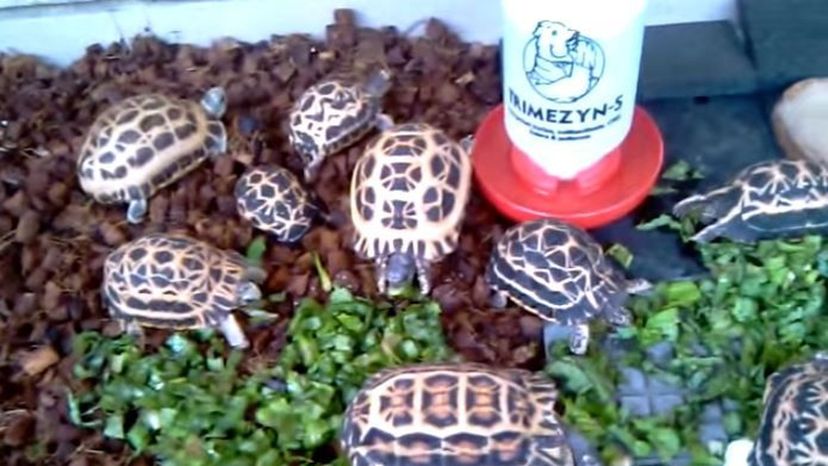
youtube
Which reptile is shown in this image?
Gopher Tortoise
Ornate Box Turtle
Northern Spider Tortoise
The spider web like patter of yellow lines on this tortoise's shell give it its name. All tortoises are turtles, but tortoises live only on land. Other turtles prefer water.
Advertisement
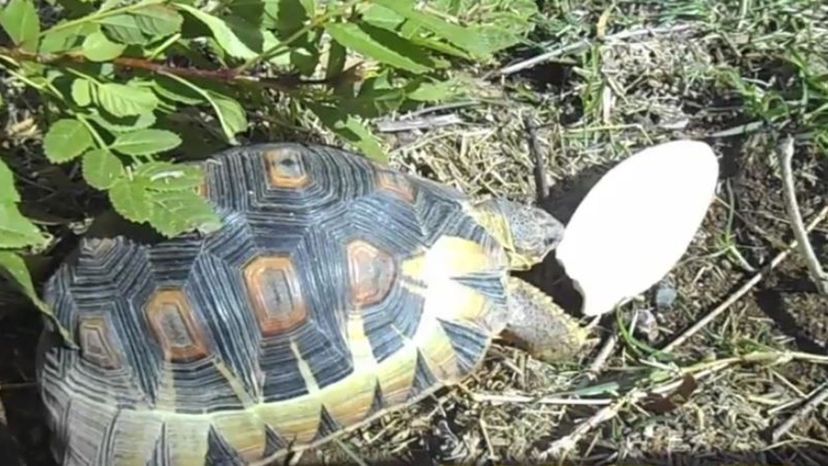
youtube
Which reptile is shown in this image?
Central American River Turtle
South African Bowsprit Tortoise
The bowsprit is the long pole that extend out of the front of a ship. These male tortoises have something like this under their neck. A portion of the shell projects out. This helps the males defend their territory from other males and attract a mate.
Star Tortoise
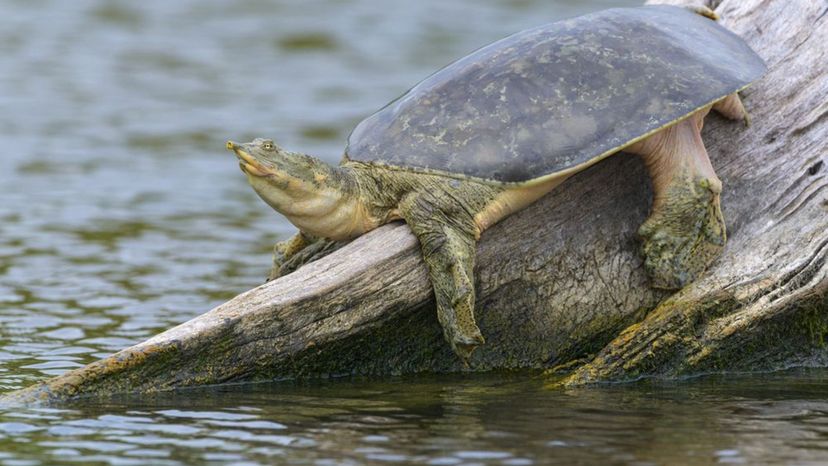
shutterstock
Which reptile is shown in this image?
Northern Spider Tortoise
Spiny Softshell Turtle
Unlike most turtles, this softshell's shell does not contain hardened bony plates. Not only can these turtles breathe by snorkeling, but they can actually absorb oxygen from the water.
Balkan Hermann's Tortoise
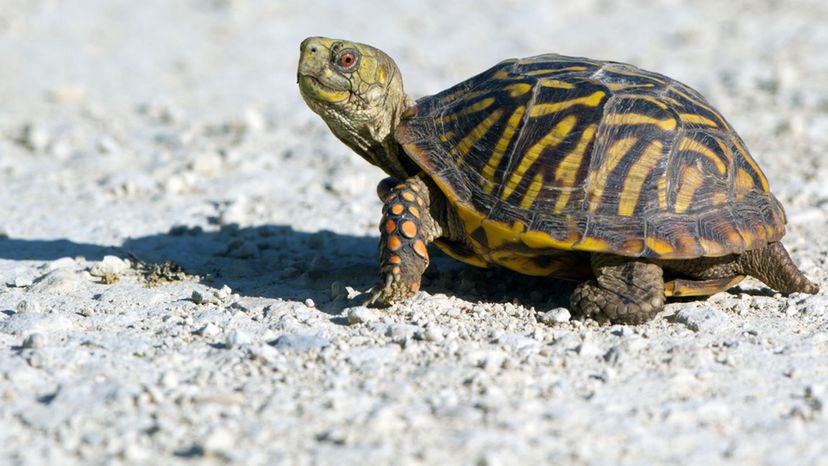
shutterstock
Which reptile is shown in this image?
Radiated Tortoise
Vietnamese Big-Headed Turtle
Ornate Box Turtle
You can find this turtle in plains, grasslands, forests, and streams. These turtles hibernate in the winter by burying themselves underground. All the turtles in a colony wake up within a week or two of each other, just as spring begins.
Advertisement
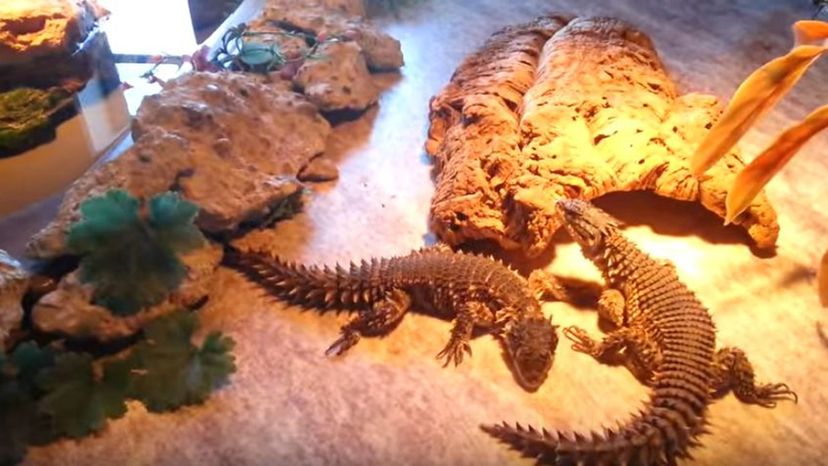
youtube
Which reptile is shown in this image?
Solomon Island Prehensile-Tailed Skink
Warren's Girdled Lizard
These lizards are quite shy and hide in the rocks in the mountains. They are very observant of their surroundings and cautious when they move. Females have a gestation period of about seven months, then give birth to up to six live offspring.
Black Tree Monitor
You Got:
/46
n/a